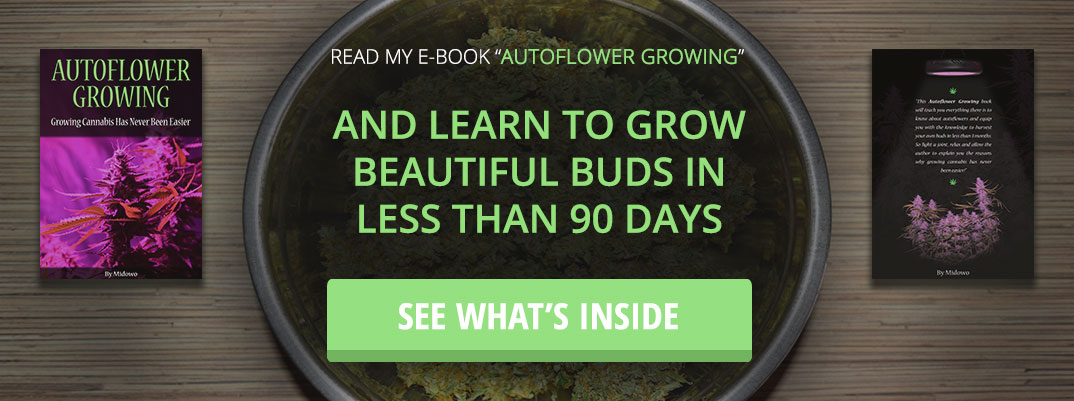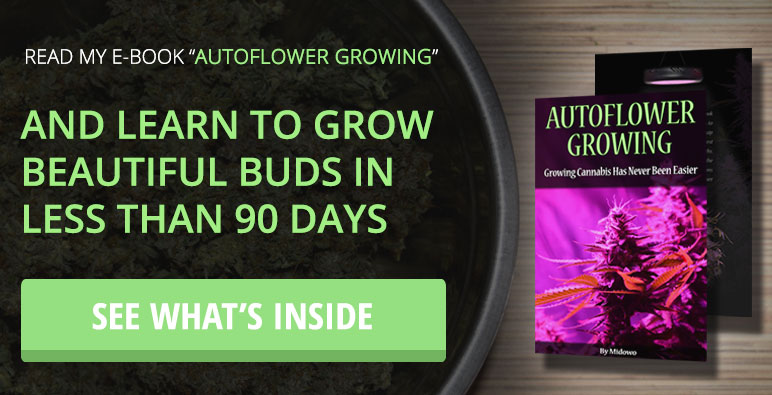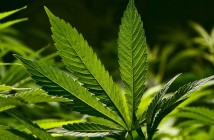Nutrition is a vital part of the cannabis life cycle as it not only keeps the plant alive but also gives us beautiful plants with large buds when it’s time to harvest.
There are a slew of nutrients that your autoflower cannabis needs to thrive and those need to be kept in balance so that your plant has access to everything it needs.
Nitrogen, phosphorus, and potassium (N-P-K) are needed in abundance as they control various aspects of the plant’s growth at any specific time.
Apart from those macronutrients, other micronutrients are needed in smaller quantities.
If you start to give your plant too much of one thing (or everything!) it may have a hard time processing additional minerals and that can cause it to develop a nutrient burn.
This guide is to help you understand how to observe your plants and to gain an understanding of what to look out for when a nutrient burn is apparent on your cannabis auto flower plant.
Nutrient burn isn’t necessarily a bad thing as long as you don’t let it get too far along, as it will turn into toxicity.
What exactly is nutrient burn?
Nutrient burn is a common problem encountered by growers. It is the first sign that you are overfeeding your cannabis and if it isn’t remembered at that time can go on to produce serious issues.
Tip burn is another name for nutrient burn because the tips of the fan leaves on your plant will turn yellow and start to curl.
If it isn’t addressed the curling can progress up the fan leaf and give it a dry, brittle texture, hence where the name “burn” came from.
The most common cause for a nutrient burn is adding too much of a certain nutrient to your feeding regiment.
Using pre-mixed soil with added nutrients is another common cause of nutrient burn as manufacturers tend to add large amounts.
It’s always important to read the labels on any soil you use and follow the recommended dosage for nutrients from your manufacturer. Once you get the hang of your particular autoflower strain, you can modify the levels based on what the plant needs.
While nutrient burn can happen at any stage of the growth you have to watch out for the seedlings in particular.
They require next to no minerals and it can be easy to give them too much. Since they are delicate at this stage, too much can kill them.
You won’t see this type of problem with organic growth as it takes time for the microbes to break down the amendments to make the nutrients bioavailable. This lets the plant take up the nutrition whenever it needs to.
Feeding plants with bottled nutrients makes the minerals available immediately for the plant to absorb. It is in this case that the plant has too much and can cause the first signs of tip burn.
The tricky part, and why you want to get to know your autoflower strain, is that some plants will uptake different amounts of nutrients depending on their genotype and phenotype.
Most growers have their starter recipe for nutrients and then adjust it based on the needs of their specific plant.
Once you’ve worked with autoflower cannabis enough you can eventually create a generic formula based on the electrical conductivity of your solution.
Can autoflower cannabis plants recover from nutrient burn?
The onset of nutrient burn can take up to a few days to show any signs. This means that any solution to the problem can also take a few days to show you improvement.
Some growers tend to think of nutrient burn like a good sign because it shows that you are pushing the plant. A small amount of tip burn will usually go away on its own if you lower your nutrient recipe.
A quicker way would be to flush your plant with fresh PH-adjusted water. This will give the buffer in your soil a faster readjustment period. The severity of the nutrient burn dictates if you need to do complete flushing of the soil.
Developing nutrient burn in the vegetative state is generally more forgiving as your cannabis plant can just regenerate leaves in a new spot.
If the burn progresses past the tips of the leaves you can always cut away the damaged leaves without a problem.
If you develop nutrient burn in the flowering stage it can be more of a hassle as the plant is focused on producing big buds with a limited capacity to regrow damaged fan leaves.
Should you come across nutrient burn in the flowering stage ensure that you either flush the plant with freshwater or slowly cut back on the nutrient strength.
A severe case of nutrient burn turns into toxicity and autoflower plants have a hard time recovering from that in the flowering stage.
How to prevent nutrient burn in your autoflower cannabis
The only prevention for a nutrient burn is to make sure you give the appropriate amount of each nutrient to your plant.
A good way to keep an eye on what you’re giving the plants is to purchase an electrical conductivity meter. This reader will give you an idea of the ion content of the water which is an indicator of the mineral amount.
However, it does not tell you what specific nutrients are in the solution, that requires lab testing.
Don’t let your soil dry out too much as mineral salts will build up within.
Once you water the dry soil then a lot of nutrients will be bioavailable for your plant to uptake. This can cause nutrient burn without adding any additional nutrients. If this is the case then make sure to flush your soil repeatedly until the electrical conductivity comes down.
Nutrient burn is a great lesson to learn for new growers
While it’s something you don’t want to see eating your cannabis leaves, nutrient burn is what you would call a beginner problem and is evident in the solution to both prevent and remedy it.
If you see tip burns starting to show up on your leaves, don’t panic. Autoflower cannabis is resilient and can usually bounce back from any deficiencies pretty quickly.







